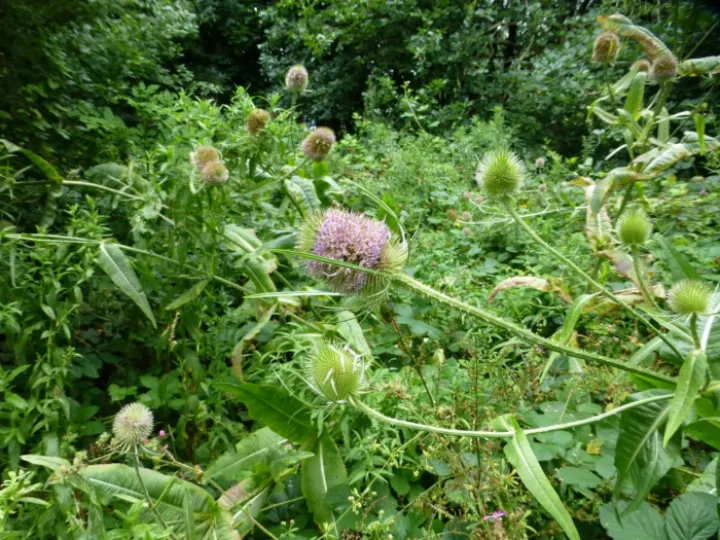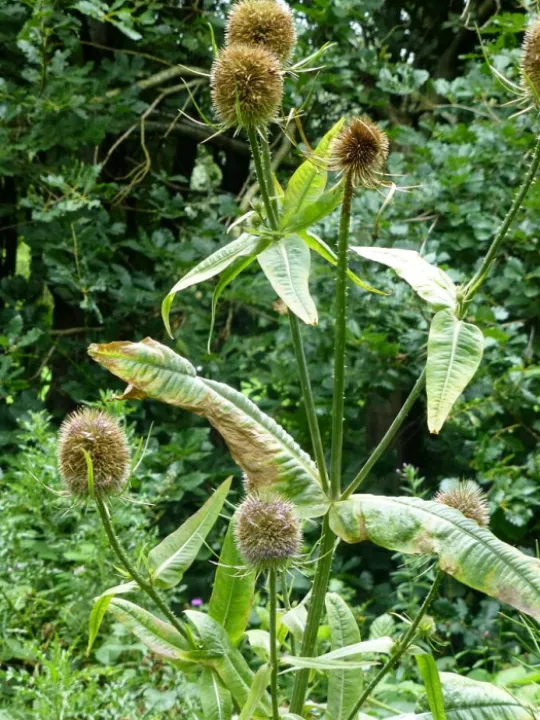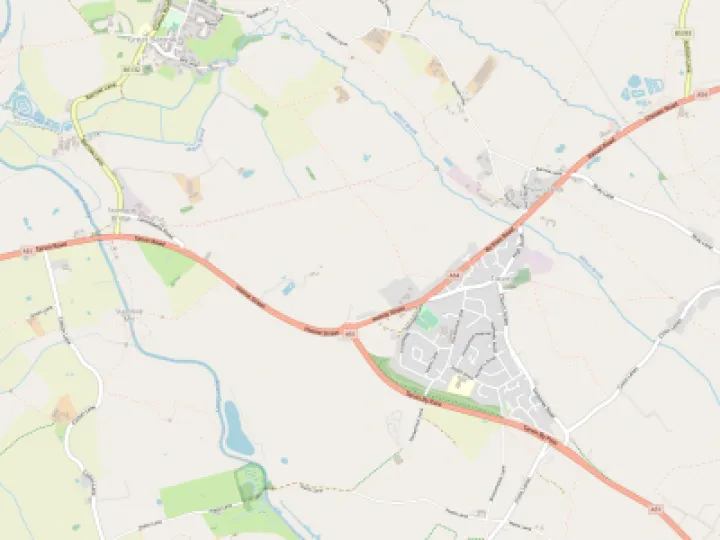Tarvin Community Woodland – Teasels
Teasels – Dipsacus fullonum
(Generally known as the Wild Teasel, the Common Teasel or the Fuller's Teasel.)
As must be the case for many folk, my first introduction to the Teasel (or Teazel – or, in years gone by, Teazle) was as a strange, architectural wild flower, much beloved of flower arrangers. Their prickly stem and leaves makes them easy to identify – and even more difficult to handle if you find that one has somehow managed to grow in your garden! However, it is the flowers and the subsequent seed heads that are most striking. The flowers (which can be purple, dark pink, lavender or white) form heads on the end of the stems, with the first flowers beginning to open in a belt around the middle of the spherical or oval flower head, and then opening sequentially toward the top and bottom, forming two narrow belts as the flowering progresses. Once pollinated, the dried head persists, with the small seeds maturing in mid autumn. The seeds are an important winter food resource for some of the smaller birds (notably the goldfinch) and it is for this reason that their growth is encouraged in our woodland.
The Latin name Dipsacus comes originally from the Greek word Dipsa, meaning 'Thirst for water'. The leaves appear in pairs, which are joined together opposite each other to the main stem, forming a cup-like whorl. Rain water can collect in the cup-like receptacles and it is thought that this structure may perform the function of preventing sap-sucking insects such as aphids from climbing the stem. However, insects landing to drink may drown and it is quite usual to see dead insects in these little pools of water. In a paper that he read to the Royal Society, Francis Darwin (the son of Charles Darwin) speculated that this might mean that Teasels are, in fact, insectivorous (or carnivorous) plants. However, an experiment done in 2011 showed that, while adding dead insects to these cups does increase the setting of the seeds of teasels, it does not increase the height to which they grow, so they cannot be truly carnivorous.
The name teasel derives from Old English and is related to the verb "to tease" – the dried heads of the plant were once widely used in textile processing, providing a natural comb for cleaning, aligning and raising the nap on fabrics, particularly wool. The product of the teasing process was called teased wool. The dried flower heads were attached to spindles, wheels, or cylinders (sometimes called teasel frame) to raise the nap on fabrics (that is, to tease the fibres). By the 20th century, teasels had been largely replaced by metal cards, which can be made uniformly and do not require the constant replacement needed as the teasel heads wore out. However, it would seems that some people who weave wool may still prefer to use teasels for raising the nap, claiming that the result is better; in particular, if a teasel meets serious resistance in the fabric, it will break, whereas a metal tool will rip the cloth.
Quick Links
Get In Touch
TarvinOnline is powered by our active community.
Please send us your news and views.








